Log in or create new account to save this product to your wishlist.
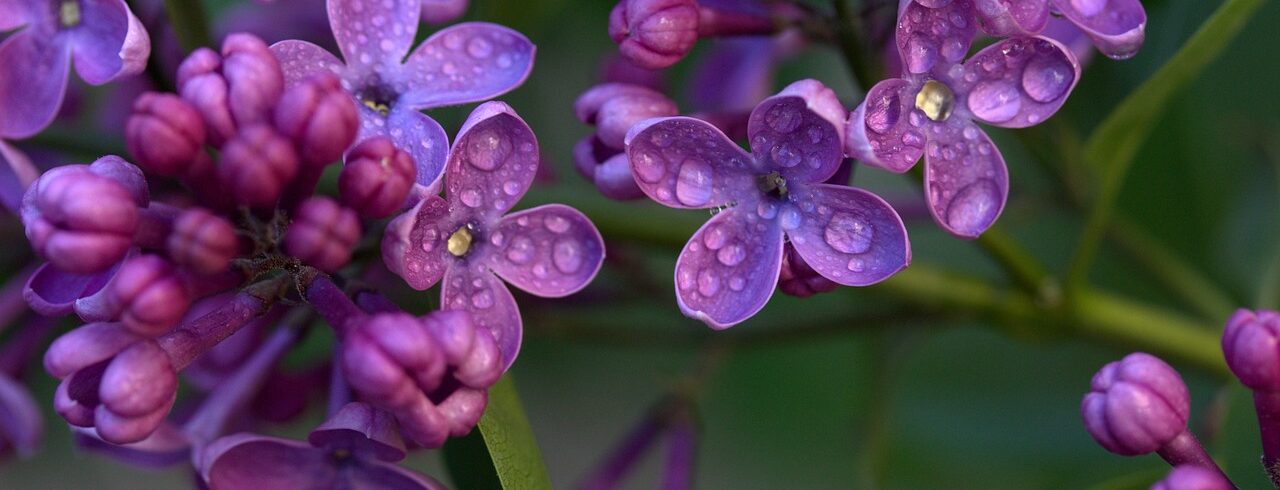
Prune lilacs like a pro! A step-by-step guide
Lilacs are stunningly beautiful butterfly-attractors! But if you don't cut them back, they get leggy and dull. Find out how to hard-prune your lilacs for excellent results.
🌱 All important maintenance moments for your lawn during the year. Leave your email and we will send you the lawn calendar for free.
Enter your email
Receive the lawn calendar in the mail
Enjoy a green lawn all year round!

- Order by 2PM = shipped today
- 250.000+ satisfied customers!
- 60 day satisfaction guarantee
Lilacs are stunning blooming plants that attract countless butterflies and bees into your garden, making them a staunch favourite of many garden lovers. Their beautiful bud-like blooms fill your outdoor space with an exotic fragrance, bringing gorgeous colour into your garden. But how do you prune lilacs?
- The different varieties of lilac
- Planting and caring for summer lilacs
- Prune lilacs like a pro!
- Pruning lilacs — a step-by-step guide
- The advantages of buddleia pruning
- When to prune your summer lilac
- How much should I cut?
- Common mistakes to avoid when pruning lilacs
- Pruning lilac — aftercare
- Pruning your lilac is worth it!
- FAQs
Pruning is one of the most essential garden tasks, encouraging bountiful blooming and healthy growth. But do it wrong, and you weaken your plants.
This article explains how to prune lilac and buddleia plants to encourage healthy, vitality, and abundant flowers and foliage.
Ready? Let’s get started!
The different varieties of lilac
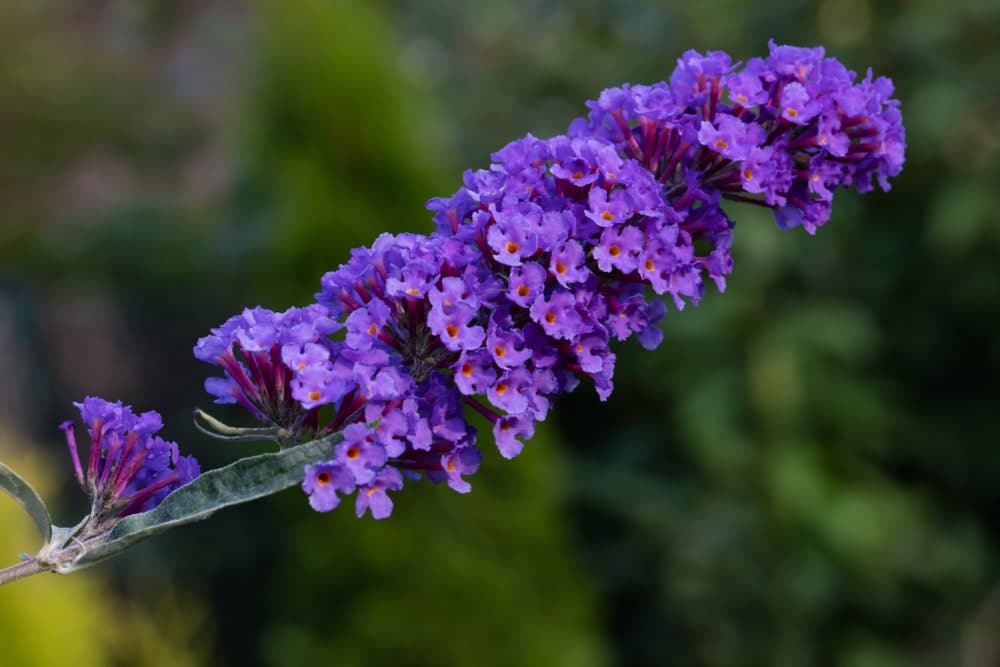
Common lilac blooms in spring, while summer lilac (aka buddleia) bursts into flower during the summer — both belonging to the olive plant family.

There are several sub-varieties of lilacs and buddleia, including:
- Buddleia davidii
- Buddleia alternifolia
- Buddleia globosa
- Buddleia x weyeriana
- Buddleia asiatica
Each variety has variations in colour, height, and site requirements. However, they all have one thing in common: butterflies and insects flock to lilacs of all varieties.
Planting and caring for summer lilacs
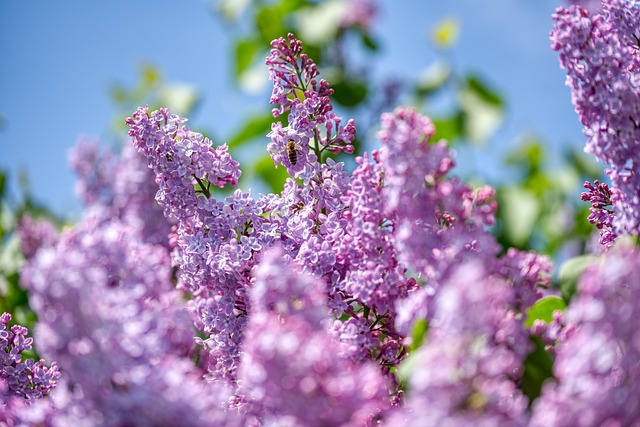
Most lilacs, including the stunning Butterfly lilac (aka Buddleia Grand Cascade), like it sunny. So, choose a location away from shade when planting. Most lilacs need at least an hour of direct sun every day.
Lilacs prefer well-draining soil — heavy clay soil becomes easily waterlogged, so add some soil improver before planting to prevent soil flooding, which will damage your lilac’s roots.
Additionally, include a slow-release fertiliser in your planting hole and re-feed every spring to help boost your lilac’s growth. And while older lilac plants are relatively drought-tolerant, younger plants need plenty of water — hydrate potted lilacs once or twice a week.
Prune lilacs like a pro!
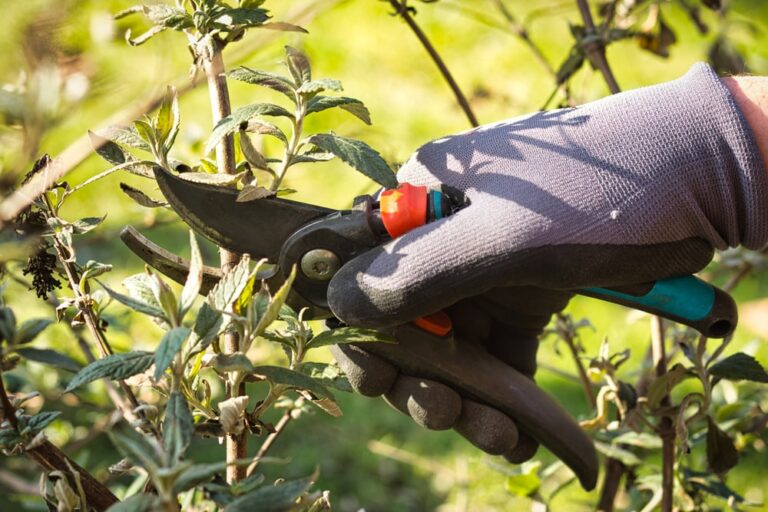
You can be pretty brutal with a buddleia because they regrow vigorously in no time. Pruning back hard helps the plant form new flowering panicles, so cut back your summer lilac once a year, just before spring.
Pruning lilacs — a step-by-step guide
Gather your courage if this is the first time you’ve pruned your lilac bush because you’re going to cut it back short!
Follow these instructions for excellent results:
- Cutting shoots — cut the shoots down to the base of the trunk until the plant has just two short branches remaining. The cut side of each clipping should face outwards.
- Dead-head regularly— remove faded panicles during the flowering season. This helps the plant develop more blooms.
- Clean up — throw your cuttings into the compost or your green bin.
The advantages of buddleia pruning
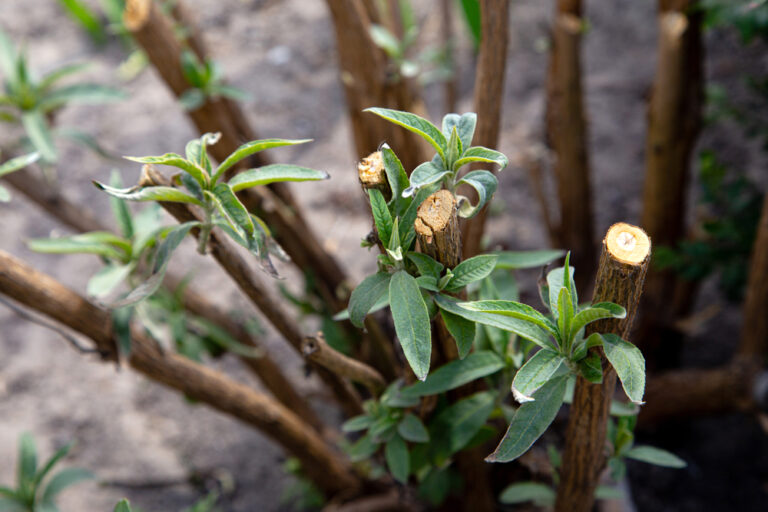
You might think that cutting a plant back so drastically is bad for the plant — but, on the contrary, your plant will flourish after hard pruning.
You’ll enjoy:
- More flowers — cutting stimulates the plant to form new shoots (and thus more flowers). If you skip a pruning, your plant will produce fewer flowers, and the shrub may look a little sorry for itself.
- Improved growth — a well-trimmed buddleia grows compactly and densely. Pruning creates an attractive shape and appearance.
- Rejuvenation — annually pruning your buddleia lilac gives the plant a longer life. You’ll cut off old, dead, and diseased wood and shoots, helping the plant maintain maximum health and vitality.
When to prune your summer lilac
The best time to prune lilac is in late winter before it sprouts for spring. As a rule, the optimal period is between the end of February and the beginning of March, but it depends on whether the winter has been cold. At this point, the plant is still in its winter dormancy, and the wounds caused by pruning heal quickly before new growth kicks in.
And dead-head your lilac throughout the summer for maximum flowers and foliage.
How much should I cut?
Reducing a plant to a few stubs sticking out of the ground may feel a little destructive, but it’s exactly what a summer lilac needs for good growth.
Leave young plants a little longer, but don’t be afraid of hard-pruning established plants. New shoots will appear once spring settles in.
Common mistakes to avoid when pruning lilacs
- Always use clean, sharp tools to prune your lilac. Using blunt or dirty scissors or secateurs can transmit diseases to the plant.
- Avoid pruning in the autumn — the plant won’t recover in time for the frost.
- Pruning young plants too hard. Give them a couple of years to establish before hard-pruning.
Pruning lilac — aftercare
While pruning encourages new growth, it’s a good idea to feed the plant and water it well after cutting it back.
Use an organic slow-release fertiliser, such as compost or blood and bone, to provide the plant with plenty of nitrogen for new growth.
Pruning your lilac is worth it!
Pruning allows you to remove the dead and diseased shoots, which — in turn — protects the plants from pests and diseases, promoting vital growth for the flowering season.m
Annual pruning keeps all lilac plants healthy and prolifically in bloom. And blooming lilacs attract tons of butterflies and other beneficial pollinating insects to your garden.
Keep watering and fertilising your lilacs at least once a year to promote growth and flowering, and always use clean tools to cut your lilac back.
FAQs
Yes. Carefully remove faded flower heads all year round — even in summer. This process, called “cleaning out, ” helps the plant focus its energy on new bloom growth.
No — the pruning technique for both lilac plants is similar. However, summer lilac grows faster in summer, so that it will grow back more quickly. Remove faded blooms for new flowering heads.
Prune your lilacs in late winter/early summer to promote spring growth and summer flowering. Use pruning to manage the size and spread of the plant — they often grow enormous.
Any questions?
I hope I’ve provided all your questions about pruning your lilacs for excellent growth and flowering. But if you have any more questions, don’t hesitate to email me.
Or you could check out our comprehensive Help & Advice section for all your gardening and lawn care tips!
Thanks for reading!
-
Orchids: A Complete Guide on How to Care for ThemWant to give your orchid the best possible care? Discover essential tips from placement to watering and pruning. Learn everything you need to know!Read more
-
Growing Wisteria Made Simple: From Planting to Perfect BloomsWith blossoms like a purple waterfall, Wisteria sets an almost magical and colourful mood. If you want to grow this beauty in your garden, you’ll need a bit of patience. Don’t worry, it will most definitely pay off.Read more
-
How to Build a DIY Greenhouse: A Practical Guide for Smart SpendersImagine extending your growing season throughout the year, nurturing tender plants regardless of the weather, and creating a personal garden sanctuary. This is precisely what a DIY greenhouse offers you. Let’s learn how to build one.Read more
-
How to Grow Eucalyptus in British GardensWith a little love and care, eucalyptus trees can thrive in English gardens. Since they don’t germinate well without proper help, there are not considered invasive. So, there is no reason not to plant them if you enjoy their looks.Read more
-
Transform Your Garden with All-Year-Round Flowering PlantsDid you know you can enjoy blooming flowers even in January? With the right selection of all year round plants, there’s no need to wait until spring to add some colour to your garden.Read more
-
How to Create a Butterfly Garden: A Simple Guide for British GardensThe UK's butterfly population includes 59 different species. These beautiful winged creatures face a steady decline because of habitat loss, pollution and changing weather patterns. Your garden can become a vital link between nature reserves and natural habitats. Let’s explore how.Read more
-
Volcanic Rock Dust for Your Garden—Application and TipsDid you know that volcanic rock dust is a brilliant organic soil improver? This article explains exactly what it's good for and how to use it properly.Read more
-
How to Use Landscape Fabric ProperlyIf weeds or erosion in your garden are troubling you, landscape fabric might be the solution. We’ll explain how and when to use it properly, just keep on reading.Read more
Leave a comment
Your answer will be displayed on the site and the interested party will be notified by email.
Leave a comment
Have a question or want to share your experience? Leave us a comment.

- Order by 2PM = shipped today
- 250.000+ satisfied customers!
- 60 day satisfaction guarantee

- Order by 2PM = shipped today
- 250.000+ satisfied customers!
- 60 day satisfaction guarantee

🌱 All important maintenance moments for your lawn during the year. Leave your email and we will send you the lawn calendar for free.
Enter your email
Receive the lawn calendar in the mail
Enjoy a green lawn all year round!






















Comments (0)
There are no comments yet. Well then, what are you waiting for to
Be the first to write your comment!inaugurate this pretty page?
Do you have some comments?